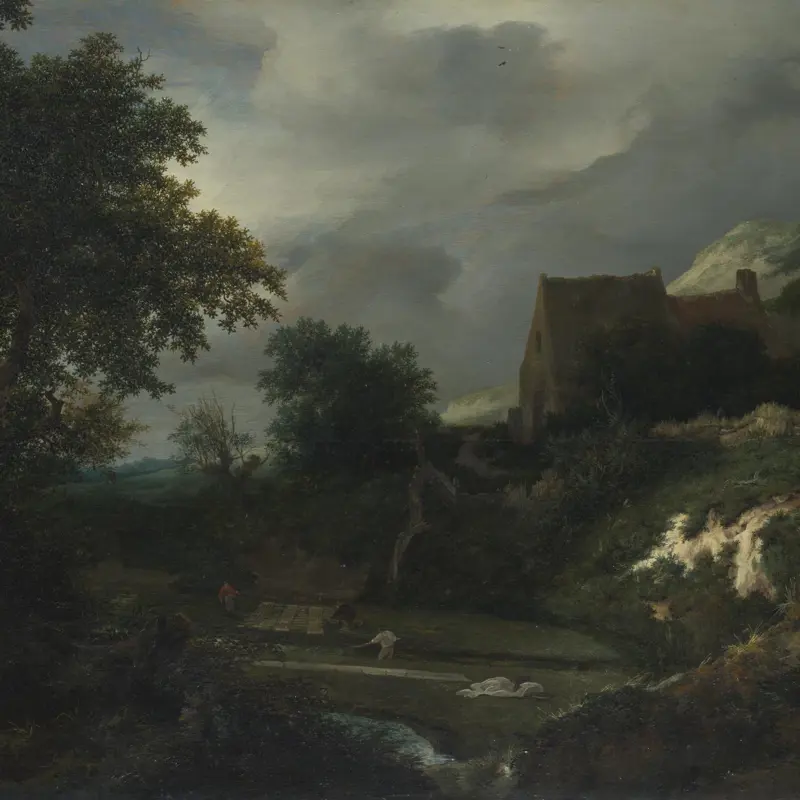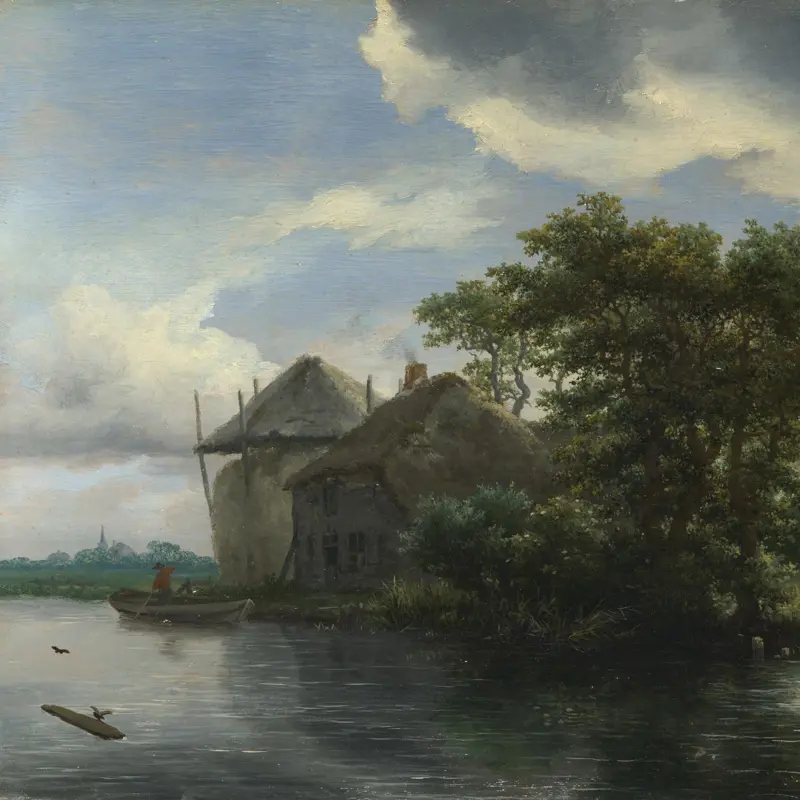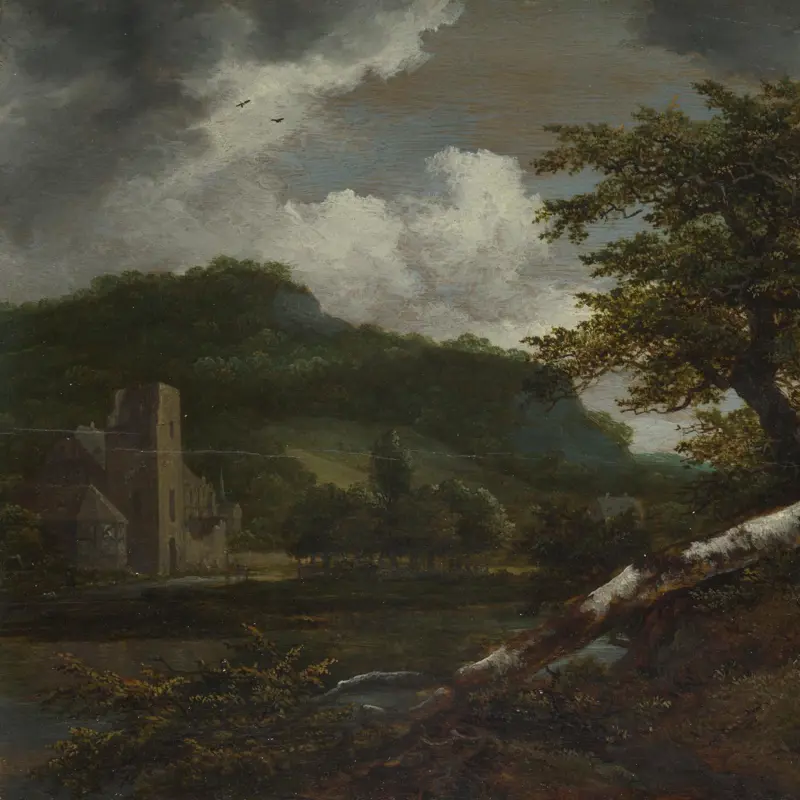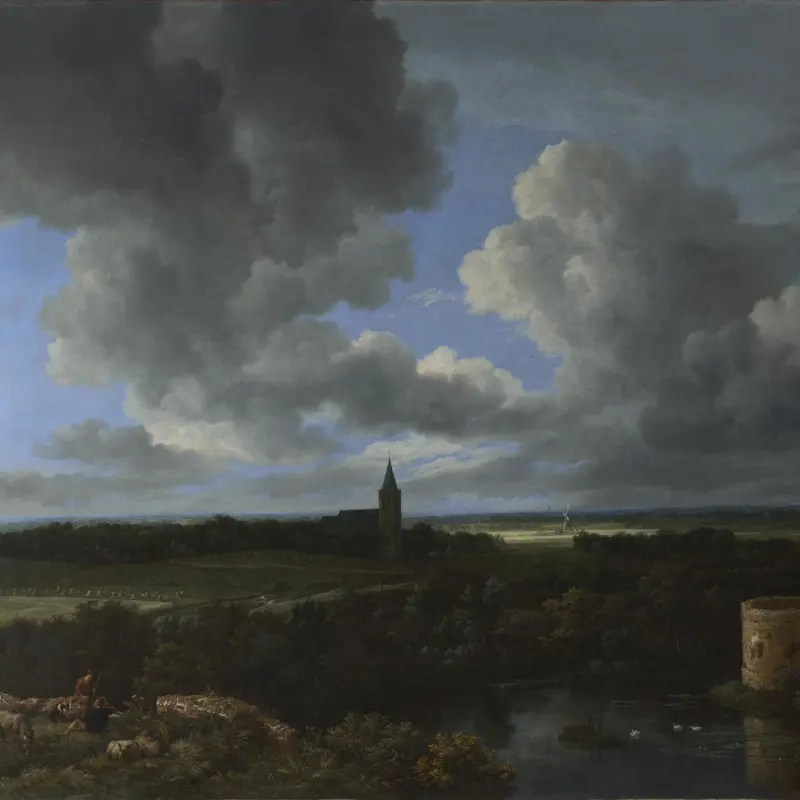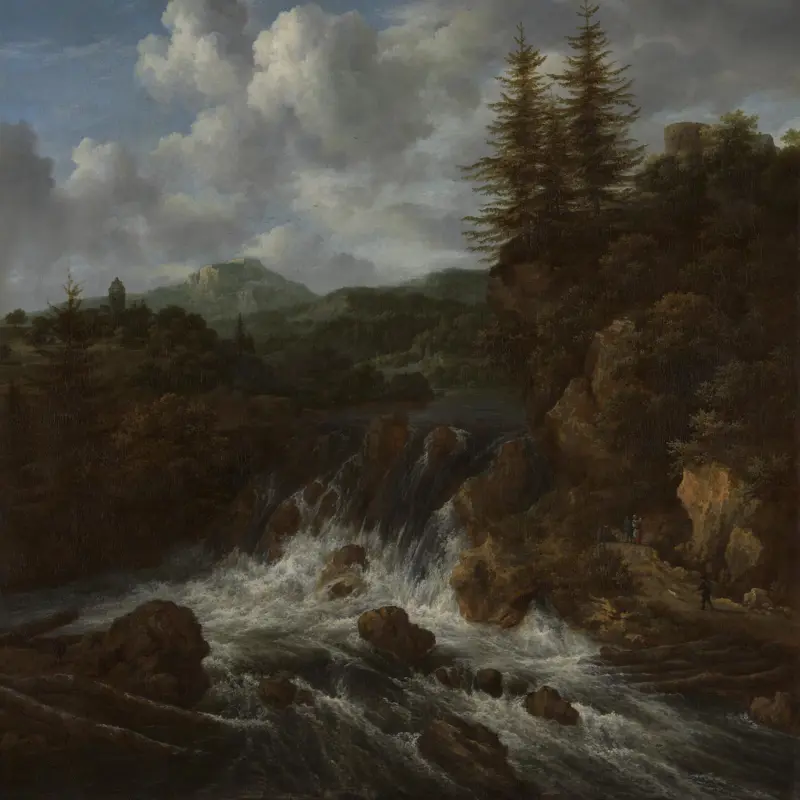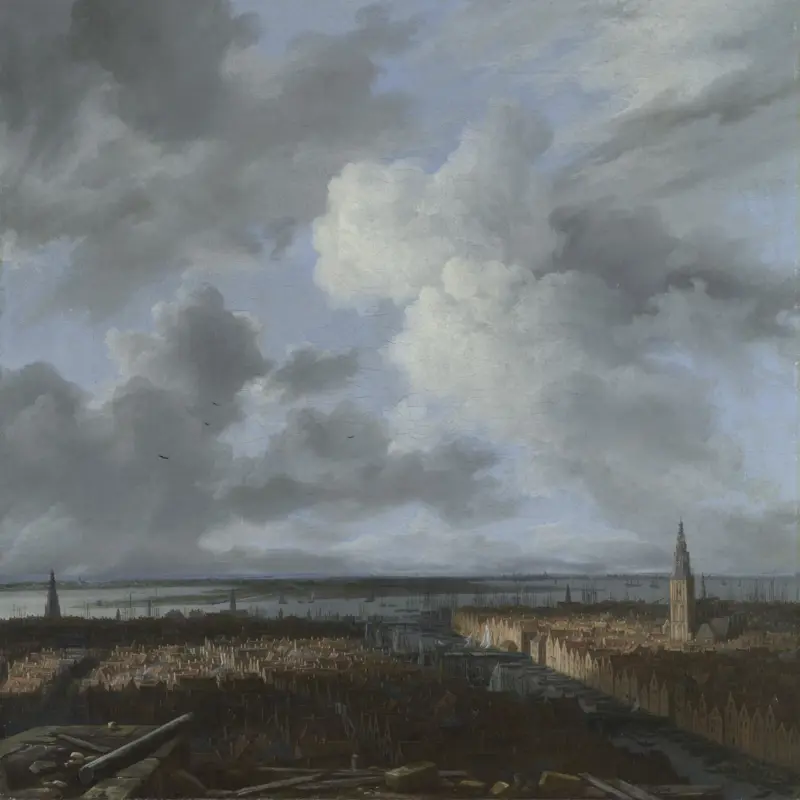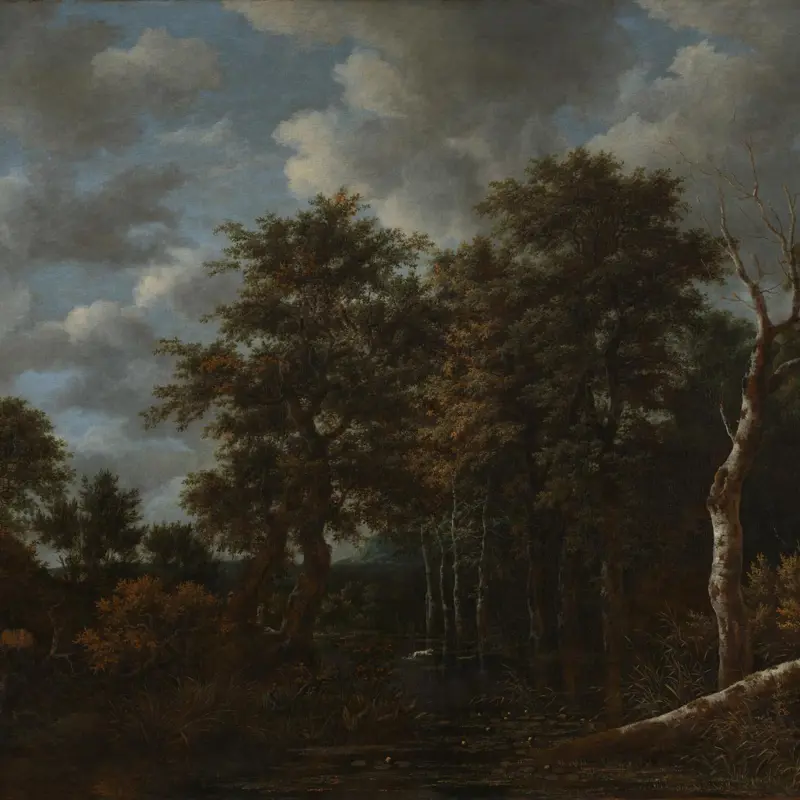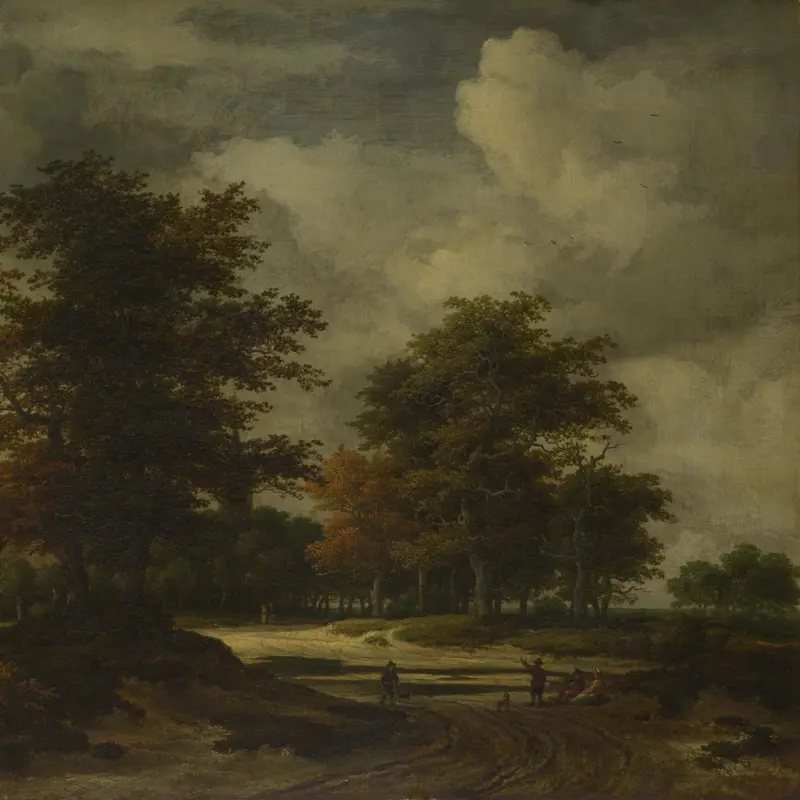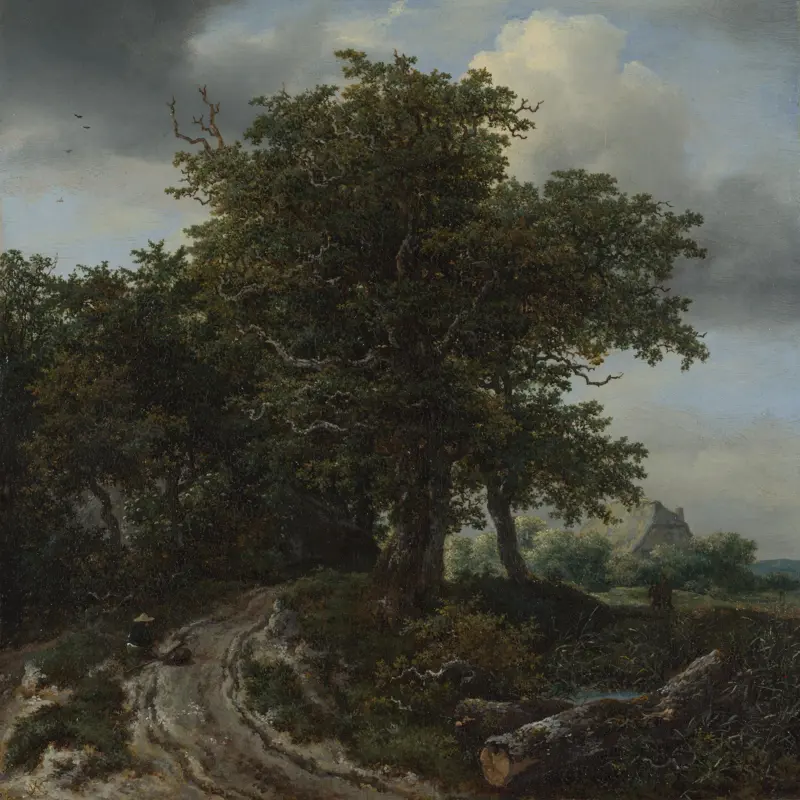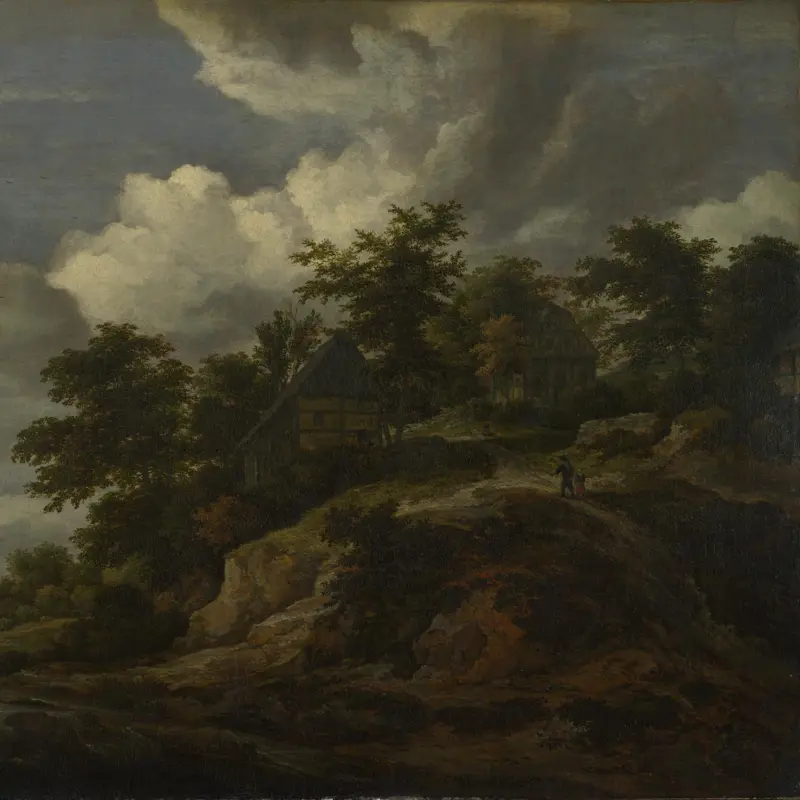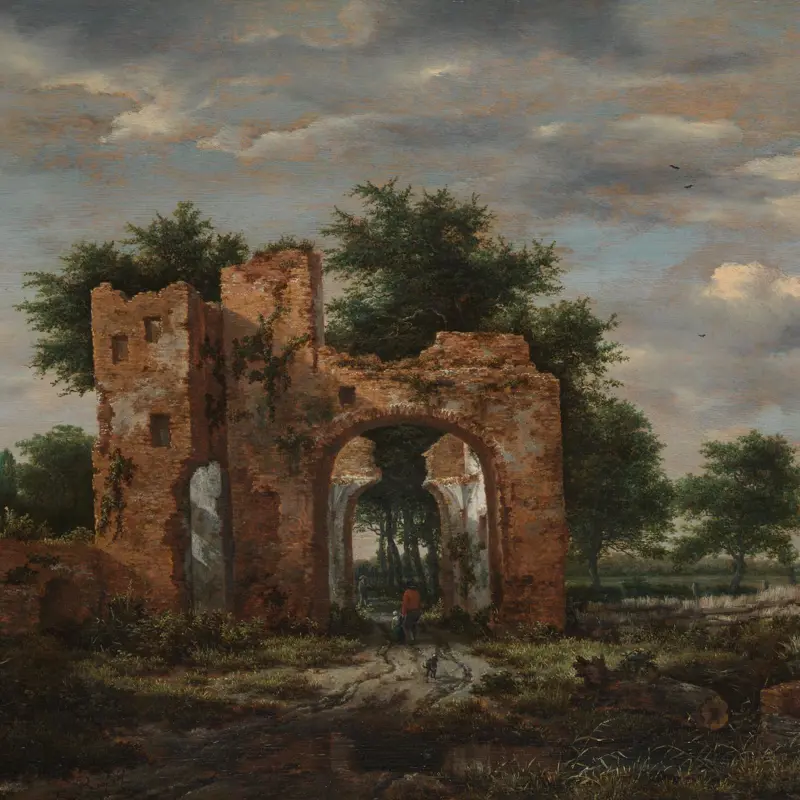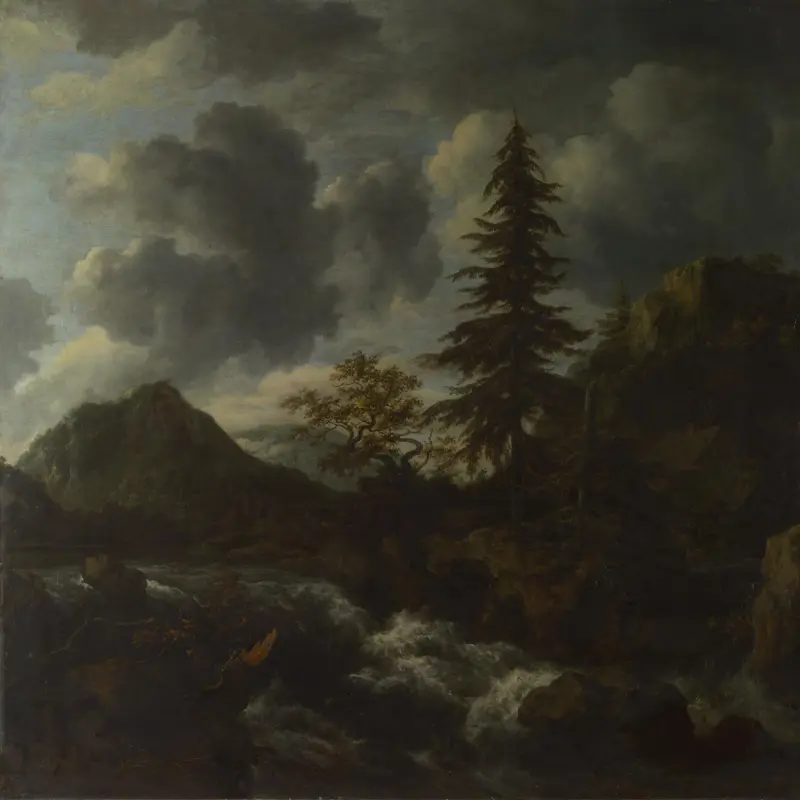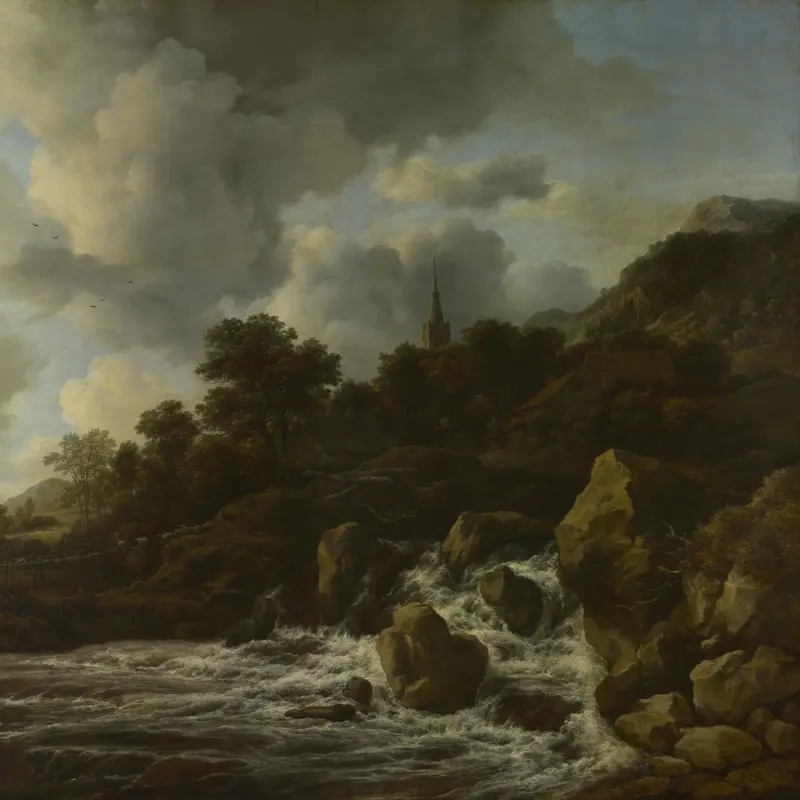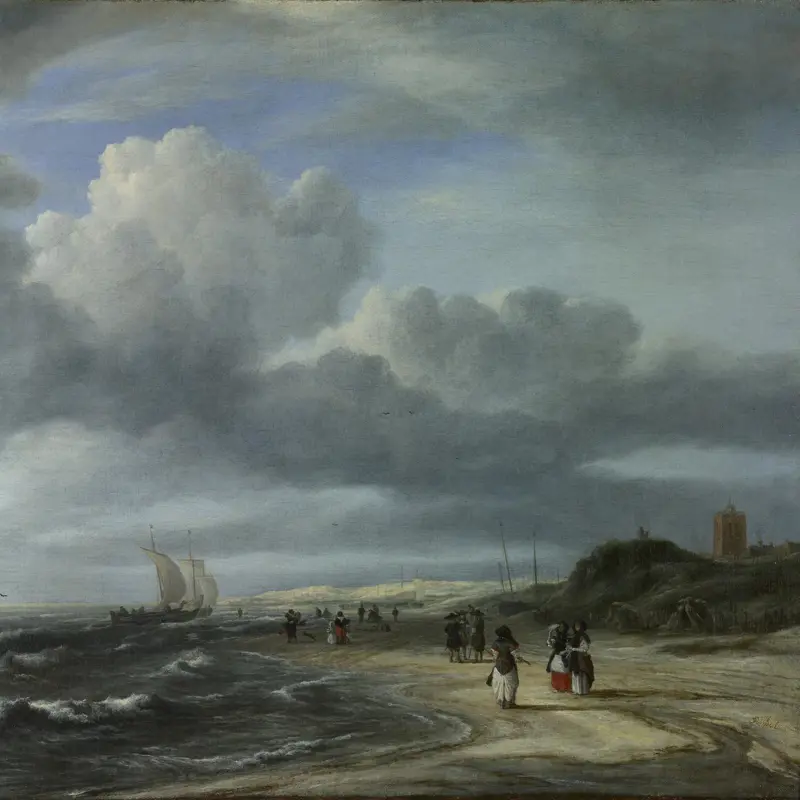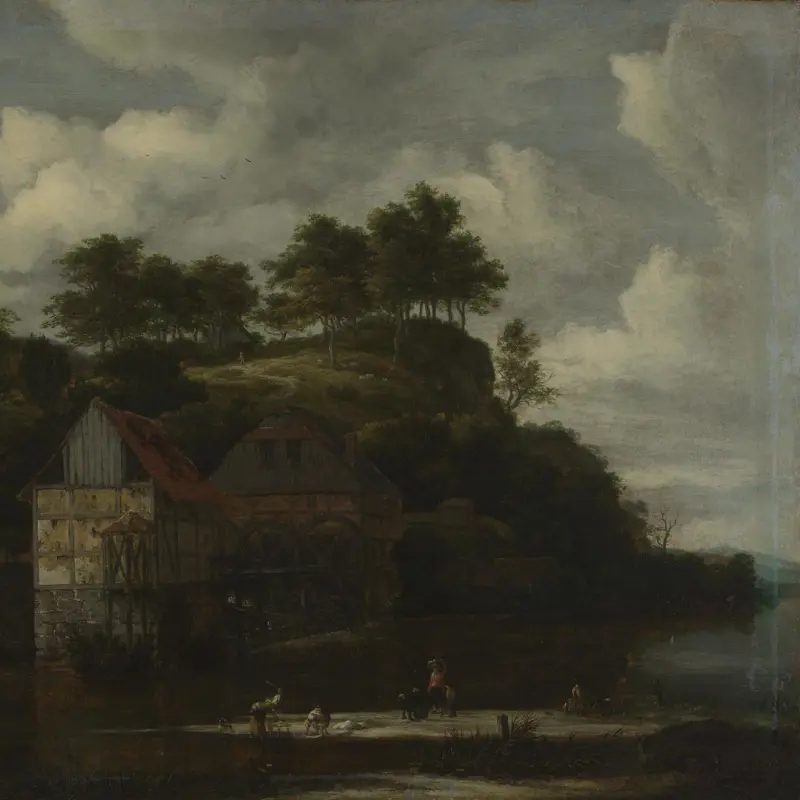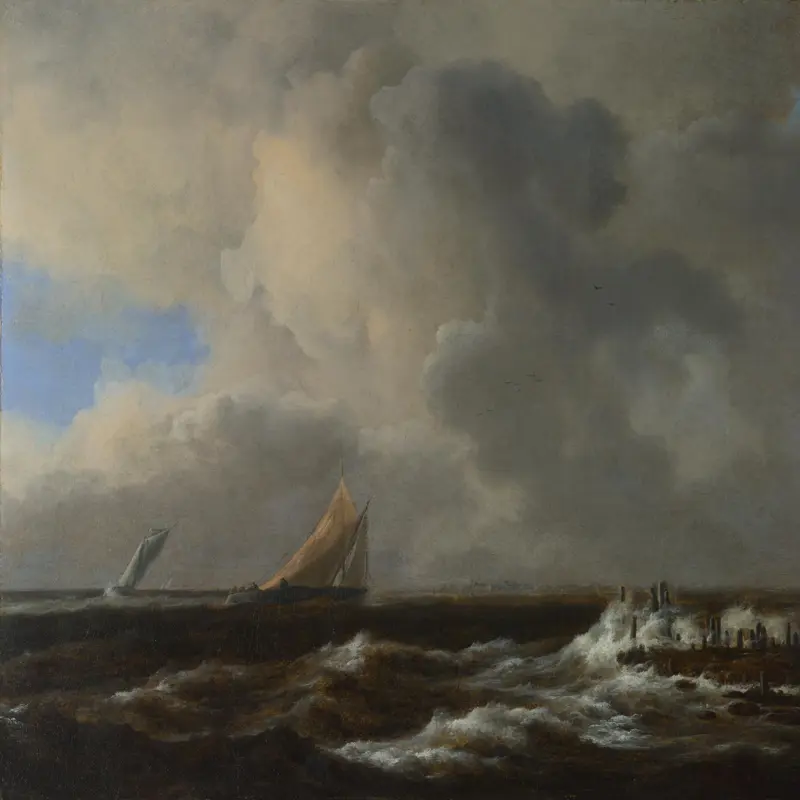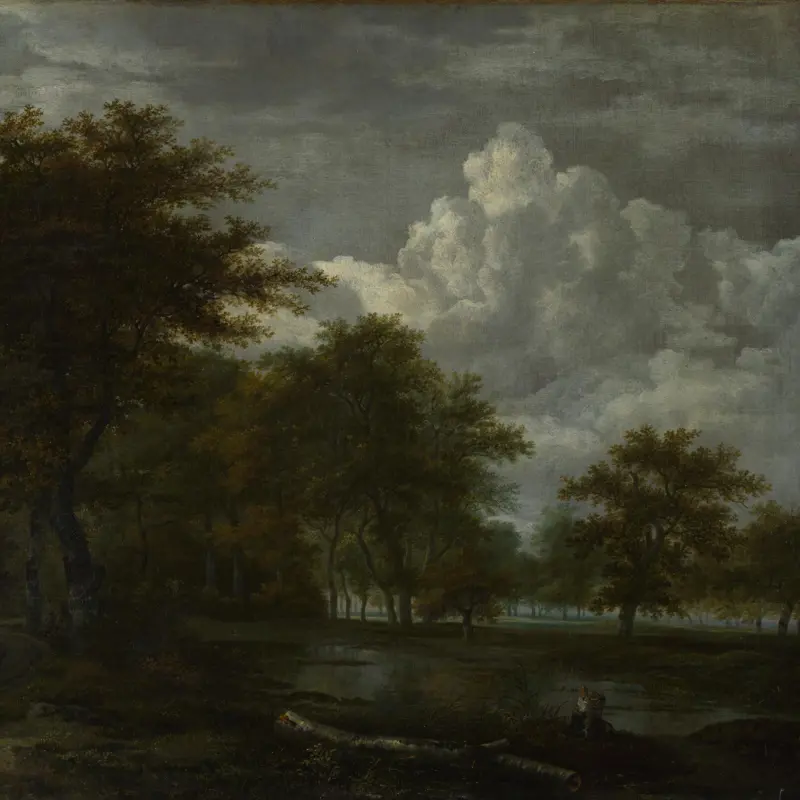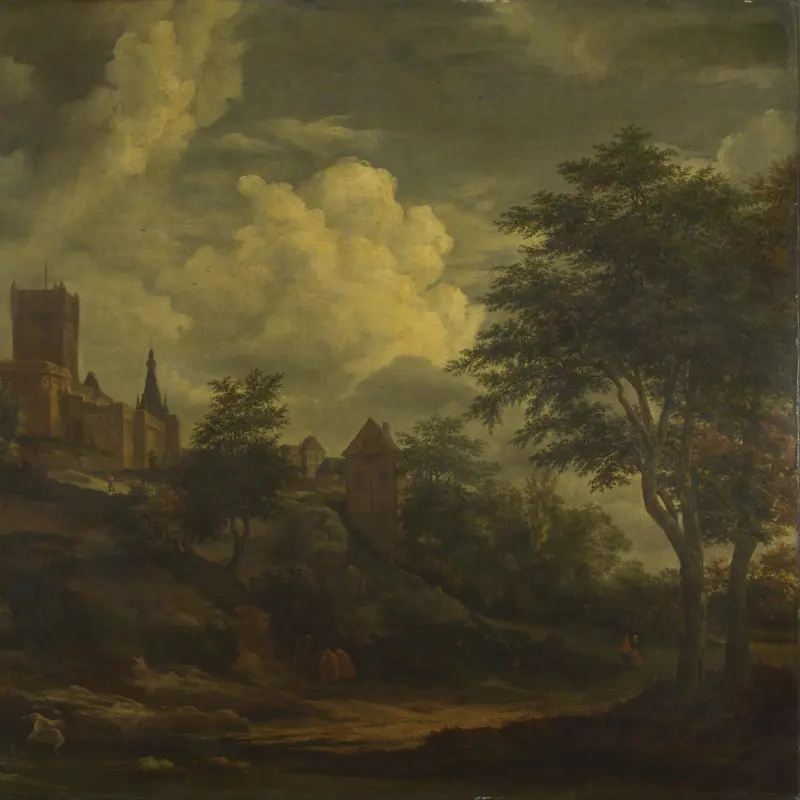Jacob van Ruisdael, 'A Waterfall in a Rocky Landscape', probably 1660-70
About the work
Overview
The tall chimneys of the house hidden among the trees seem the most stable things in van Ruisdael’s picture, holding on to the steep hillside that slides down towards the river. The slender trunks of the birch trees on the right are twisted and crooked, and the leaves turning yellow are ready to fall and be swept away by the water. The water pounds against the bridge’s legs as it tumbles down between them.
Van Ruisdael painted many views of waterfalls. For some time it was assumed that he must have visited a more mountainous country than Holland to give him such an abundant source for these pictures, although no record of such a journey has been found. But his friend Allart van Everdingen had been to Scandinavia and returned with drawings of the craggy mountains and waterfalls that became a source for van Ruisdael’s dramatic images.
Key facts
Details
- Full title
- A Waterfall in a Rocky Landscape
- Artist
- Jacob van Ruisdael
- Artist dates
- 1628/9? - 1682
- Date made
- probably 1660-70
- Medium and support
- oil on canvas
- Dimensions
- 98.5 × 85 cm
- Acquisition credit
- Bought, 1859
- Inventory number
- NG627
- Location
- Not on display
- Collection
- Main Collection
Provenance
Additional information
Text extracted from the ‘Provenance’ section of the catalogue entry in Neil MacLaren, revised and expanded by Christopher Brown, ‘National Gallery Catalogues: The Dutch School: 1600–1900’, London 1991; for further information, see the full catalogue entry.
Exhibition history
-
2012In Pursuit of Art: Charles Eastlake’s Journey from Plymouth to the National GalleryPlymouth City Museum and Art Gallery22 September 2012 - 15 December 2012
Bibliography
-
1960Maclaren, Neil, National Gallery Catalogues: The Dutch School, 2 vols, London 1960
-
1991Maclaren, Neil, revised by Christopher Brown, National Gallery Catalogues: The Dutch School, 1600-1900, 2nd edn (revised and expanded), 2 vols, London 1991
-
2001
C. Baker and T. Henry, The National Gallery: Complete Illustrated Catalogue, London 2001
About this record
If you know more about this work or have spotted an error, please contact us. Please note that exhibition histories are listed from 2009 onwards. Bibliographies may not be complete; more comprehensive information is available in the National Gallery Library.

